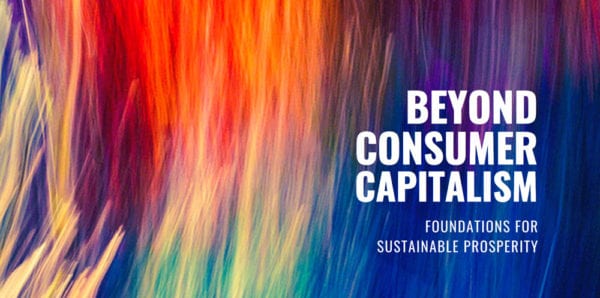Mary Douglas, good life narratives, and sustainability: Instagramming as skilful participation in a social conversation
If Mary Douglas was alive today, what would she say about Instagram? And how could her insights be useful in relation to sustainability? Here, CUSP researcher Anastasia Loukianov is summarising the tentative answers to these questions provided in her latest article with Kate Burningham and Tim Jackson.

Instagram is known for being a platform where we post the highlights of our lives, making it an important space of meaning-making in relation to what it means to live well. The young user-base of the platform makes this space particularly relevant to prospects of sustainable futures and for the past three years, we have been studying how good lives are represented on Instagram. In a previous paper, we explored understandings of the good life in a sample of Instagram posts from 2014-2015. At the time, we remarked on the present-centredness of the platform and suggested that the social conventions, or unspoken rules, of participation on Instagram could play a considerable role in shaping the kinds of good life understandings that are broadcast. This is the topic that we explore in more detail in this new research log.
Our latest article is based on a network analysis of the relationships between hashtags present on 793 Instagram posts tagged #goodlife and posted in 2018 on public profiles, and a thematic analysis of a subsample of 200 of those posts. The goals of this study are twofold. First, we give an overview of three main understandings of the good life that could be found on the platform at the time: the good life of the self-made affluent entrepreneur, the good life of the world-traveler, and the good life as shared experience. Second, we channel Mary Douglas to contextualise these narratives and—conceptualising Instagram as a social conversation—argue that ‘adequate’ participation on the platform may require engagement in more or less sustainable practices.
Instagram content continuously changes, hence if we were to look at #goodlife today, we may not find the same narratives of the good life as we did in 2018. Back in 2018, the good life of the self-made affluent entrepreneur was primarily broadcast through quotes on the background of pictures of fiction characters such as Tony Stark, Tony Montana or Leonardo Di Caprio’s interpretation of Jordan Belfort in the Wolf of Wall Street, as well as those of successful real-life entrepreneurs such as Elon Musk. These characters are all known for the lavish lifestyles that they lead. Alternatively, users used images of luxury items such as high-end cars as backgrounds to their quotes. The entrepreneur was constructed as someone who is wealthy and lives sumptuously. The good life of the world-traveler was characterised by photographs of young women on the backdrop of exotic landscapes, pristine beaches, lush forests, and glamourous cityscapes. Young women were typically fashionable and traditionally feminine, and while money was never explicitly mentioned, the depicted lifestyles implied wealth. The good life as shared experience regrouped casual photographs of hikes, yoga, runs and other physical activities, outputs of creative practices, and snapshots of time spent with significant others. Multiple posts emphasised shared engagement in and enjoyment of activities that have a potential to be sustainable, whether they were physical or creative activities (Isham et al., 2019).
Both the good life of the world-traveler and that of shared experience seemed more accessible to users than the good life of the entrepreneur, as in the former cases users posted their own photographs rather than pictures borrowed from elsewhere. In terms of frequency of appearance and engagement, the two first types of posts were on average more popular than the last one.
Multiple interpretations of Instagram have associated the practice with self-promotion. Whilst that might very well be the case, we wondered instead what would happen if—borrowing from Douglas and Isherwood’s (1979) analysis of consumer goods—we understood the platform as part of a wider social conversation that provides moral judgements on how one ought to live one’s life and what ought to be good about it.
Assuming that Instagram is indeed a social conversation, to participate, at minimum, users need to ‘post’ (i.e. upload a picture to the platform). In theory, recent posts are displayed first on a user’s personal feed and in the explore page, but as new posts are added every second, any given post is quickly lost from view (Carah & Shaul, 2016). The workings of the Instagram algorithm are such that to remain visible, users must obtain more likes and comments than others. This is done through tagging, engaging viewers, but also through the purchase of likes and comments which are used as a currency (Dumas et al., 2017). This is what Douglas and Isherwood would call ‘marking services’: through the distribution of likes, comments, and followings, users circulate judgement on the validity of the content that they are viewing. In the process, users contribute to establishing particular understandings of living well. Engagement on the platform enables users to help create the social world and find a ‘creditable place’ in it (Douglas, 1976) — both crucial aspects of human life.
To take part in the conversation, one has to learn the rules of ‘adequate’ participation on the platform and adopt new ways of seeing in order to discern ‘Instagram-worthy’ content (Miller, 2016). What kind of content is popular? What is adequate to be posted? Narratives that use consistent vocabulary and imagery are more easily identified (Waddock, 2018), making them recognised forms of ‘adequate’ participation. We all know that our holiday pictures are fine to post because we have seen many people posting theirs and because they tend to be well-liked. The popularity and consistency of the good life narrative of the entrepreneur and that of the world-traveler reinforce their status as adequate forms of participation.
Posting content that feeds into a given narrative does not necessarily indicate compliance with any particular values, but it can entail some practical actions. In the majority of cases, the good life narrative of the entrepreneur was more aspirational than it was a state of actual achievement—most posts relating to this theme consisted in quotes or images borrowed from elsewhere. That’s different for the world-traveler who needed a range of accessories (e.g. fashionable outfits) and transportation to the various destinations in order to embody their narrative. Arguably rather material intense, to adequately participate, users must buy the clothes and travel, because the aesthetic conventions of this genre require users to post their own images. There is potential in other narratives, such as ‘the good life as shared experience’ to encourage more sustainable activities, but at least in our sample, this genre was less popular than the other two.
But why? Here, it is the reality of what is required to produce popular content on Instagram which is at fault. Being a skillful or successful Instagram user requires accruing more likes/comments/followers than others. Douglas and Isherwood argued in 1979 already that ‘successful’ participants in social conversations—in our case Instagram users who have been judged by others to be skilled participants—provide judgements that tend to hold more value than those of other participants. This is in itself an interesting lever for our purposes, weren’t it for the time intensity of participating in this particular conversation. Unless already famous, making a name for oneself on Instagram is a time consuming endeavour which leaves little space for other types of work. Hence those who ‘make it to Top’ tend to rely on for-profit businesses to fund the creative work which underpins their participation on the platform.
This is where it gets tricky: as the share of discursive space that is occupied by sponsored content increases, there is a danger that what constitutes adequate participation will be increasingly dictated by business logics. The predominance of two relatively less sustainable narratives in an important space of meaning-making for young people suggests a real challenge to sustainability.
Not all is lost. As we show in our paper, participating can also mean engaging in creative and physical activities and spending time with others. It is after all one of three main recognised themes. But allowing this kind of participation to flourish would demand a rethinking of the business logics underpinning Instagram itself.
References
- Carah, N. and Shaul, M. (2016). ‘Brands and Instagram: point, tap, swipe, glance’. Mobile Media & Communication, 4(1): 69-84. DOI: 10.1177/2050157915598180
- Douglas, M. (1976). ‘Relative poverty – relative communication’. Jackson, T. (ed.) The Earthscan Reader in Sustainable Consumption, (2005). London: Earthscan.
- Douglas M. and Isherwood B. (1979). The World of Goods. Towards and anthropology of consumption. London: Routledge
- Dumas, T.M, Maxwell-Smith, M, Davis, J.P., Giulietti, P. A. (2017). ‘Lying or longing for likes? Narcissism, peer belonging, loneliness and normative versus deceptive like-seeking on Instagram in emerging adulthood’. Computers in Human Behavior, 71:1-10.
- Isham, A., Gatersleben, B., and Jackson, T. (2019). ‘Flow activities as a route to living well with less’. Environment and Behavior, 51(4): 431-461
- Miller D (2016). Social Media in an English Village. (Or how to keep people at just the right distance). Why We Post 2. Open Access PDF, UCL Press.
- Waddock, S. (2018). ‘Narrative, memes, and the prospect of large systems change’. Humanist Management Journal, 3: 17-45. DOI: 10.1007/s41463-018-0039-9



